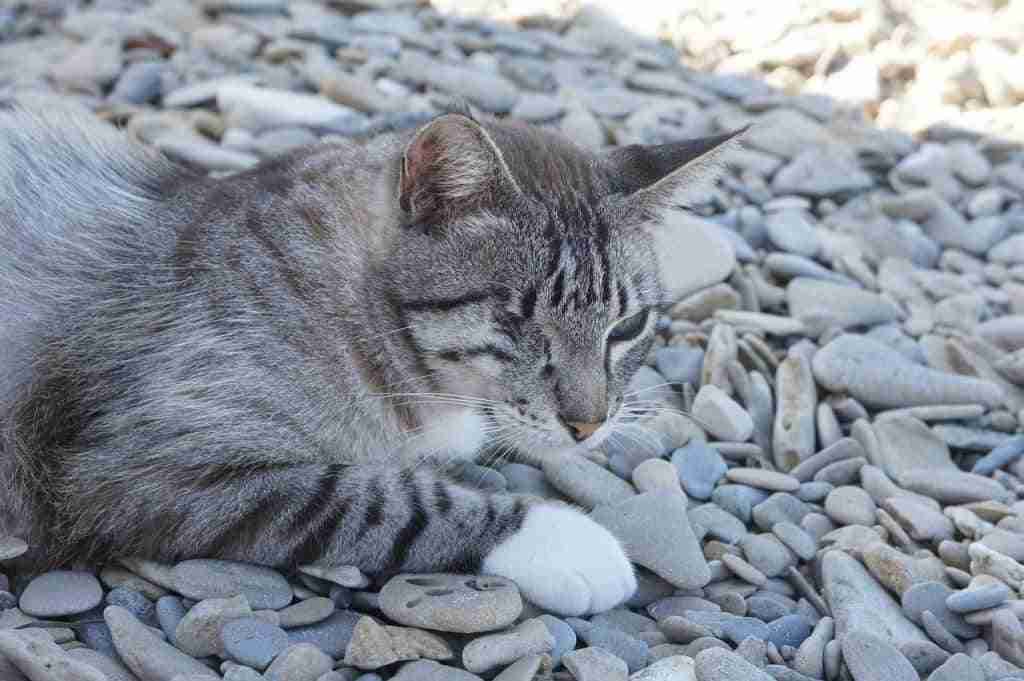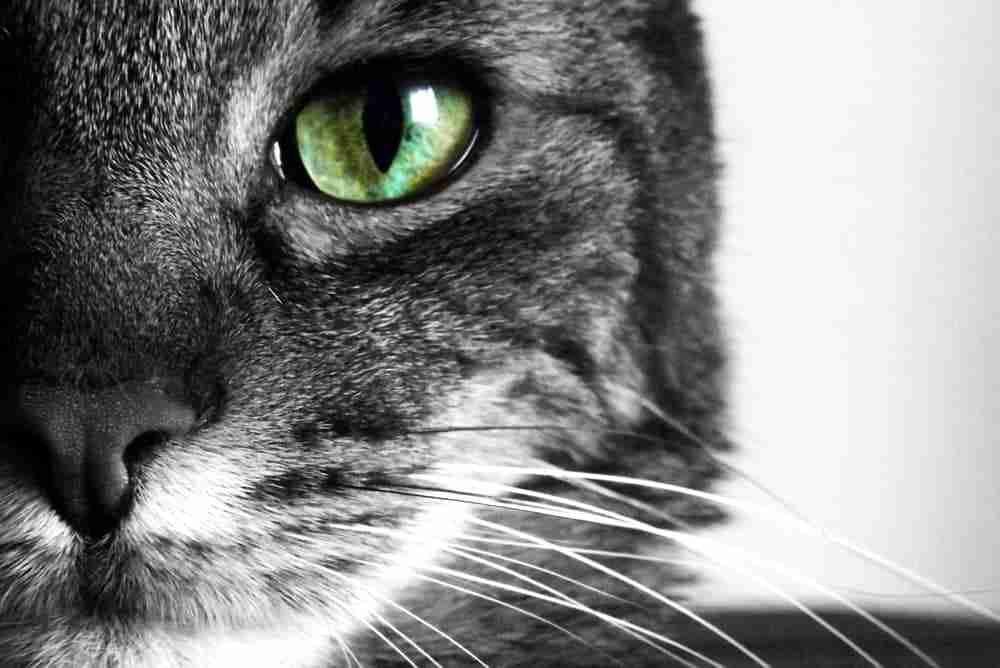Is your kitty pawing at her eye? She could have a scratch that’s causing the irritation. A scratch on your cat’s eye is a serious issue. Left undiagnosed and untreated, it can cause severe damage to your cat’s vision and even blindness.
- What are the Symptoms of a Scratched Eye in Cats?
- What are the Types of Scratched Eye Injuries in Cats?
- What are the Causes of Scratched Eyes in Cats?
- What Do I Do If My Cat Has a Scratched Eye?
- How Do Vets Diagnose Scratched Eye Injuries in Cats?
- How Do Vets Treat Eye Injuries in Cats?
- Recovery of Eye Injuries in Cats
If it looks like your kitty is avoiding bright lights, they’re closing one eye or squinting, or they have swelling on one side of the face, it’s a sign they need to go to a vet for diagnosis as soon as possible.
Typically, eye injuries in cats occur due to objects that penetrate or entirely puncture the eyeball. The injury could occur for several reasons. Fights with other cats or poking the eye on a branch while climbing are common injuries.
This post unpacks everything you need to know about what to do if you suspect your cat scratched its eye.
What are the Symptoms of a Scratched Eye in Cats?
The symptoms of eye injury occur rapidly after sustaining the injury. If the cat doesn’t clear the foreign object responsible for causing the injury, it may exacerbate symptoms.

Some of the symptoms of eye scratches in cats include the following.
- A cloudy cornea.
- Blood is visible in the white of the eye.
- Dilated pupil.
- A visible object lodged in the eye.
- Discharge emanating from the eye.
- Inflammation or swelling in the eye.
- Your cat might start pawing their eye or rubbing it against the furniture.
What are the Types of Scratched Eye Injuries in Cats?
There are two types of eye injuries in cats.
Penetration – The most common injury associated with scratches. A foreign object enters the eye but doesn’t puncture the cornea.
Perforation – The object causing the injury passes through the cornea creating a severe injury.
What are the Causes of Scratched Eyes in Cats?
There are several ways your cat could end up with a scratched eye. Cats rely on their vision; as crepuscular predators, they need their eyes to identify, track, and take down prey.
Many cat owners don’t know that their cat has a “third eyelid.” It’s a transparent membrane protecting the eye from scratches. Yes, the cat relies on its vision so much; evolution gave it the third eyelid for protection.
Despite mother nature’s additional protection for your kitty, she’s still at risk of developing a scratched eye. Some of the common causes of scratched eyes in cats include the following.
- Cat eye scratched in fight with other cats – that’s a big one.
- Scratches from leaves, branches, wires, or fencing.
- Playing with objects at home.
- Fireworks and other projectiles.

What Do I Do If My Cat Has a Scratched Eye?
If your cat scratches her eye, it’s a good idea to conduct a preliminary examination yourself before rushing off to the vet. When conducting your examination of your cat, look for the third-eyelid located in the corner of the eye closest to the nose.
If the third eyelid looks inflamed and red, it’s probably dealing with an eye injury or scratch. Owners need to leave the wound alone and take their cat to the vet for diagnosis. Only a vet has the skillset and training required to diagnose and treat this injury.
If your cat gets an infection due to the scratch, look for signs of discharge leaking from the eye. Your cat will also likely paw at the affected eye due to the discomfort.
So, what do you do if you suspect your cat scratched eye? Follow this step-by-step guide to dealing with the situation.
Step 1 – Approach your cat with caution. If it appears anxious or nervous, you might need to retrain them by wrapping their legs in a towel while examining the eye.
Step 2 – Flush the cat’s eye with saline water. Don’t use tap water; it contains bacteria.
Step 3 – Place an Elizabethan collar on the cat if you have one in the house; it protects the eye from further injury.
Step 4 – Bandage the same paw on the affected side with a dewclaw if you don’t have an Elizabethan collar.
Step 5 – Place your kitty in her carrier and call the vet for an appointment.
Step 6 – Get in the car and drive to the vet.
How Do Vets Diagnose Scratched Eye Injuries in Cats?
When it comes to preserving your cat’s vision, a scratched eye constitutes a medical emergency for cat owners. Only a vet can diagnose the problem with your cat’s eye, and you should never attempt any treatment at home other than flushing with saline water.
Even if the foreign object causing the problem is visible, don’t attempt to remove it yourself. Doing so could damage the eye further.
If there isn’t a visible solution to the problem, and the vet doesn’t notice a scratch or a foreign object, they’ll try to rule out other underlying issues like bruising to the cornea or a corneal ulcer. To do so, they may choose to conduct a full ocular examination.

How Do Vets Treat Eye Injuries in Cats?
Treatment for a cat eye scratch injury depends on the injury’s extent and the part of the eye affected by the injury.
Penetration injuries have a better chance of recovery than perforation injuries. Blunt trauma is also more severe than a sharp trauma to the eye.
Your vet might issue eyedrops to prevent infection in the cat, and they may also prescribe painkillers and anti-inflammatories.
Recovery of Eye Injuries in Cats
If your cat requires surgery to remove a foreign object, the vet will need to see your cat periodically to determine if the eye heals properly.
You’ll also need to check the eye each day. Notify your vet if you think there are any signs of infection or complications with the surgery and recovery.
Cats that experience vision loss due to a scratched eye need assistance from their owners with adjusting to their new life with one eye. It takes your cat a few weeks to adjust, but they eventually learn to live with the effect on their vision.
Most eye injuries in cats heal completely without any complications. However, the healing time can vary from cat-to-cat, depending on the severity of the injury, the extent of the surgery (if applicable), and the cat’s age.
